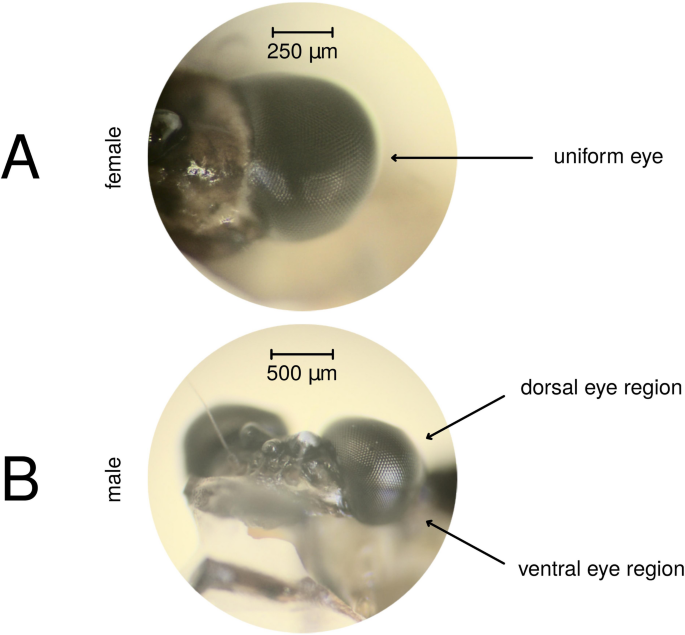Shine, J. M., Lewis, L. D., Garrett, D. D. & Hwang, K. The impact of the human thalamus on brain-wide information processing. Nat. Rev. Neurosci. 24 (7), 416–430. https://doi.org/10.1038/s41583-023-00701-0 (2023).
Article
CAS
PubMed
PubMed Central
Google Scholar
Sundermann, B. & Pfleiderer, B. Functional connectivity profile of the human inferior frontal junction: Involvement in a cognitive control network. BMC Neurosci. 13, 119. https://doi.org/10.1186/1471-2202-13-119 (2012).
Article
PubMed
PubMed Central
Google Scholar
Singer, W. Recurrent dynamics in the cerebral cortex: Integration of sensory evidence with stored knowledge. Proc. Natl. Acad. Sci. U.S.A. 118 (33), e2101043118. https://doi.org/10.1073/pnas.2101043118 (2021).
Article
CAS
PubMed
PubMed Central
Google Scholar
Gogolla, N. The insular cortex. Curr. Biology: CB. 27 (12), R580–R586. https://doi.org/10.1016/j.cub.2017.05.010 (2017).
Article
CAS
Google Scholar
Klingler, E. Development and organization of the evolutionarily conserved Three-Layered olfactory cortex. eNeuro 4 (1). https://doi.org/10.1523/ENEURO.0193-16.2016 (2017). ENEURO.0193-16.2016.
De Domenico, M., Sasai, S. & Arenas, A. Mapping multiplex hubs in human functional brain networks. Front. NeuroSci. 10, 326. https://doi.org/10.3389/fnins.2016.00326 (2016).
Article
PubMed
PubMed Central
Google Scholar
van den Heuvel, M. P. & Sporns, O. Network hubs in the human brain. Trends Cogn. Sci. 17 (12), 683–696. https://doi.org/10.1016/j.tics.2013.09.012 (2013).
Article
PubMed
Google Scholar
Crossley, N. A. et al. The hubs of the human connectome are generally implicated in the anatomy of brain disorders. Brain: J. Neurol. 137 (Pt 8), 2382–2395. https://doi.org/10.1093/brain/awu132 (2014).
Article
Google Scholar
Khan, S., Hashmi, J. A., Mamashli, F., Hämäläinen, M. S. & Kenet, T. Functional significance of human Resting-State networks hubs identified using MEG during the transition from childhood to adulthood. Front. Neurol. 13, 814940. https://doi.org/10.3389/fneur.2022.814940 (2022).
Article
PubMed
PubMed Central
Google Scholar
Dubois, J. et al. The early development of brain white matter: A review of imaging studies in fetuses, newborns and infants. Neuroscience 276, 48–71. https://doi.org/10.1016/j.neuroscience.2013.12.044 (2014).
Article
CAS
PubMed
Google Scholar
Lebel, C. & Deoni, S. The development of brain white matter microstructure. NeuroImage 182, 207–218. https://doi.org/10.1016/j.neuroimage.2017.12.097 (2018).
Article
PubMed
Google Scholar
Chiang, M. C. et al. Genetics of white matter development: a DTI study of 705 twins and their siblings aged 12 to 29. NeuroImage 54 (3), 2308–2317. https://doi.org/10.1016/j.neuroimage.2010.10.015 (2011).
Article
PubMed
Google Scholar
Groh, J. & Simons, M. White matter aging and its impact on brain function. Neuron, S0896-6273(24)00767-0. Advance online publication. (2024). https://doi.org/10.1016/j.neuron.2024.10.019
Bae, H. G., Kim, T. K., Suk, H. Y., Jung, S. & Jo, D. G. White matter and neurological disorders. Arch. Pharm. Res. 43 (9), 920–931. https://doi.org/10.1007/s12272-020-01270-x (2020).
Article
CAS
PubMed
Google Scholar
Hamanaka, G., Ohtomo, R., Takase, H., Lok, J. & Arai, K. White-matter repair: Interaction between oligodendrocytes and the neurovascular unit. Brain Circulation. 4 (3), 118–123. https://doi.org/10.4103/bc.bc_15_18 (2018).
Article
PubMed
PubMed Central
Google Scholar
Lundgaard, I., Osório, M. J., Kress, B. T., Sanggaard, S. & Nedergaard, M. White matter astrocytes in health and disease. Neuroscience 276, 161–173. https://doi.org/10.1016/j.neuroscience.2013.10.050 (2014).
Article
CAS
PubMed
Google Scholar
Sporns, O. & Betzel, R. F. Modular brain networks. Ann. Rev. Psychol. 67, 613–640. https://doi.org/10.1146/annurev-psych-122414-033634 (2016).
Article
Google Scholar
van den Heuvel, M. P. & Hulshoff Pol, H. E. Exploring the brain network: a review on resting-state fMRI functional connectivity. Eur. Neuropsychopharmacology: J. Eur. Coll. Neuropsychopharmacol. 20 (8), 519–534. https://doi.org/10.1016/j.euroneuro.2010.03.008 (2010).
Article
CAS
Google Scholar
Esposito, F. et al. Independent component model of the default-mode brain function: Combining individual-level and population-level analyses in resting-state fMRI. Magn. Reson. Imaging. 26 (7), 905–913. https://doi.org/10.1016/j.mri.2008.01.045 (2008).
Article
PubMed
Google Scholar
Esposito, F. et al. Does the default-mode functional connectivity of the brain correlate with working-memory performances? Arch. Ital. Biol. 147 (1–2), 11–20 (2009).
CAS
PubMed
Google Scholar
Mesulam, M. Defining neurocognitive networks in the BOLD new world of computed connectivity. Neuron 62 (1), 1–3. https://doi.org/10.1016/j.neuron.2009.04.001 (2009).
Article
CAS
PubMed
Google Scholar
Astolfi, L. et al. Estimation of the effective and functional human cortical connectivity with structural equation modeling and directed transfer function applied to high-resolution EEG. Magn. Reson. Imaging. 22 (10), 1457–1470. https://doi.org/10.1016/j.mri.2004.10.006 (2004).
Article
PubMed
Google Scholar
Astolfi, L. et al. Assessing cortical functional connectivity by linear inverse Estimation and directed transfer function: Simulations and application to real data. Clin. Neurophysiology: Official J. Int. Federation Clin. Neurophysiol. 116 (4), 920–932. https://doi.org/10.1016/j.clinph.2004.10.012 (2005).
Article
CAS
Google Scholar
Astolfi, L. et al. Estimation of the cortical connectivity by high-resolution EEG and structural equation modeling: Simulations and application to finger tapping data. IEEE Trans. Bio Med. Eng. 52 (5), 757–768. https://doi.org/10.1109/TBME.2005.845371 (2005).
Article
Google Scholar
Schlögl, A. & Supp, G. Analyzing event-related EEG data with multivariate autoregressive parameters. Prog. Brain Res. 159, 135–147. https://doi.org/10.1016/S0079-6123(06)59009-0 (2006).
Article
PubMed
Google Scholar
Sasai, S., Homae, F., Watanabe, H. & Taga, G. Frequency-specific functional connectivity in the brain during resting state revealed by NIRS. NeuroImage 56 (1), 252–257. https://doi.org/10.1016/j.neuroimage.2010.12.075 (2011).
Article
PubMed
Google Scholar
Lu, C. M. et al. Use of fNIRS to assess resting state functional connectivity. J. Neurosci. Methods. 186 (2), 242–249. https://doi.org/10.1016/j.jneumeth.2009.11.010 (2010).
Article
PubMed
Google Scholar
Sasai, S. et al. A NIRS-fMRI study of resting state network. NeuroImage 63 (1), 179–193. https://doi.org/10.1016/j.neuroimage.2012.06.011 (2012).
Article
PubMed
Google Scholar
Boon, L. I., Tewarie, P., Berendse, H. W., Stam, C. J. & Hillebrand, A. Longitudinal consistency of source-space spectral power and functional connectivity using different magnetoencephalography recording systems. Sci. Rep. 11 (1), 16336. https://doi.org/10.1038/s41598-021-95363-2 (2021).
Article
CAS
PubMed
PubMed Central
Google Scholar
Demuru, M. et al. Functional and effective whole brain connectivity using magnetoencephalography to identify monozygotic twin pairs. Sci. Rep. 7 (1), 9685. https://doi.org/10.1038/s41598-017-10235-y (2017).
Article
CAS
PubMed
PubMed Central
Google Scholar
Babiloni, F. From the analysis of the brain images to the study of brain networks using functional connectivity and multimodal brain signals. Brain Topogr. 23 (2), 115–118. https://doi.org/10.1007/s10548-010-0146-x (2010).
Article
PubMed
Google Scholar
Sanchez-Bornot, J. M. et al. High-dimensional brain-wide functional connectivity mapping in magnetoencephalography. J. Neurosci. Methods. 348, 108991. https://doi.org/10.1016/j.jneumeth.2020.108991 (2021).
Article
PubMed
Google Scholar
Ferrari, M. & Quaresima, V. A brief review on the history of human functional near-infrared spectroscopy (fNIRS) development and fields of application. NeuroImage 63 (2), 921–935. https://doi.org/10.1016/j.neuroimage.2012.03.049 (2012).
Article
PubMed
Google Scholar
Schroeter, M. L., Kupka, T., Mildner, T., Uludağ, K. & von Cramon, D. Y. Investigating the post-stimulus undershoot of the BOLD signal–a simultaneous fMRI and fNIRS study. NeuroImage 30 (2), 349–358. https://doi.org/10.1016/j.neuroimage.2005.09.048 (2006).
Article
PubMed
Google Scholar
Emir, U. E., Ozturk, C. & Akin, A. Multimodal investigation of fMRI and fNIRS derived breath hold BOLD signals with an expanded balloon model. Physiol. Meas. 29 (1), 49–63. https://doi.org/10.1088/0967-3334/29/1/004 (2008).
Article
CAS
PubMed
Google Scholar
Steinbrink, J. et al. Illuminating the BOLD signal: Combined fMRI-fNIRS studies. Magn. Reson. Imaging. 24 (4), 495–505. https://doi.org/10.1016/j.mri.2005.12.034 (2006).
Article
PubMed
Google Scholar
Seiyama, A. et al. Circulatory basis of fMRI signals: Relationship between changes in the hemodynamic parameters and BOLD signal intensity. NeuroImage 21 (4), 1204–1214. https://doi.org/10.1016/j.neuroimage.2003.12.002 (2004).
Article
PubMed
Google Scholar
MacIntosh, B. J., Klassen, L. M. & Menon, R. S. Transient hemodynamics during a breath hold challenge in a two part functional imaging study with simultaneous near-infrared spectroscopy in adult humans. NeuroImage 20 (2), 1246–1252. https://doi.org/10.1016/S1053-8119(03)00417-8 (2003).
Article
PubMed
Google Scholar
Buxton, R. B., Uludağ, K., Dubowitz, D. J. & Liu, T. T. Modeling the hemodynamic response to brain activation. NeuroImage 23 (Suppl 1), S220–S233. https://doi.org/10.1016/j.neuroimage.2004.07.013 (2004).
Article
PubMed
Google Scholar
Yeşilyurt, B., Uğurbil, K. & Uludağ, K. Dynamics and nonlinearities of the BOLD response at very short stimulus durations. Magn. Reson. Imaging. 26 (7), 853–862. https://doi.org/10.1016/j.mri.2008.01.008 (2008).
Article
PubMed
Google Scholar
Tak, S. & Ye, J. C. Statistical analysis of fNIRS data: A comprehensive review. NeuroImage 85 Pt. 1, 72–91. https://doi.org/10.1016/j.neuroimage.2013.06.016 (2014).
Article
Google Scholar
Han, Y. M. Y. et al. Neurophysiological and behavioral effects of multisession prefrontal tDCS and concurrent cognitive remediation training in patients with autism spectrum disorder (ASD): A double-blind, randomized controlled fNIRS study. Brain Stimul. 15 (2), 414–425. https://doi.org/10.1016/j.brs.2022.02.004 (2022).
Article
PubMed
Google Scholar
Niu, H. & He, Y. Resting-state functional brain connectivity: Lessons from functional near-infrared spectroscopy. Neuroscientist: Rev. J. Bringing Neurobiol. Neurol. Psychiatry. 20 (2), 173–188. https://doi.org/10.1177/1073858413502707 (2014).
Article
Google Scholar
Sun, W. et al. Narrowband Resting-State fNIRS functional connectivity in autism spectrum disorder. Front. Hum. Neurosci. 15, 643410. https://doi.org/10.3389/fnhum.2021.643410 (2021).
Article
PubMed
PubMed Central
Google Scholar
Zhang, T. et al. Altered complexity in resting-state fNIRS signal in autism: a multiscale entropy approach. Physiol. Meas. 42 (8). (2021).
Zhang, H. et al. Functional connectivity as revealed by independent component analysis of resting-state fNIRS measurements. NeuroImage 51 (3), 1150–1161. https://doi.org/10.1016/j.neuroimage.2010.02.080 (2010).
Article
PubMed
Google Scholar
Su, W. C. et al. The use of functional near-infrared spectroscopy in tracking neurodevelopmental trajectories in infants and children with or without developmental disorders: a systematic review. Front. Psychiatry. 14, 1210000. https://doi.org/10.3389/fpsyt.2023.1210000 (2023).
Article
PubMed
PubMed Central
Google Scholar
Zhang, F. & Roeyers, H. Exploring brain functions in autism spectrum disorder: A systematic review on functional near-infrared spectroscopy (fNIRS) studies. Int. J. Psychophysiology: Official J. Int. Organ. Psychophysiol. 137, 41–53. https://doi.org/10.1016/j.ijpsycho.2019.01.003 (2019).
Article
Google Scholar
Zhang, H. Y. et al. Detection of PCC functional connectivity characteristics in resting-state fMRI in mild alzheimer’s disease. Behav. Brain. Res. 197 (1), 103–108. https://doi.org/10.1016/j.bbr.2008.08.012 (2009).
Article
PubMed
Google Scholar
Kang, M. J., Cho, S. Y., Choi, J. K. & Yang, Y. S. fNIRS assessment during cognitive tasks in elderly patients with depressive symptoms. Brain Sci. 13 (7), 1054. https://doi.org/10.3390/brainsci13071054 (2023).
Article
CAS
PubMed
PubMed Central
Google Scholar
Wu, H., Lu, B., Zhang, Y. & Li, T. Differences in prefrontal cortex activation in Chinese college students with different severities of depressive symptoms: A large sample of functional near-infrared spectroscopy (fNIRS) findings. J. Affect. Disord. 350, 521–530. https://doi.org/10.1016/j.jad.2024.01.044 (2024).
Article
PubMed
Google Scholar
Lu, J. et al. An fNIRS-Based Dynamic Functional Connectivity Analysis Method to Signify Functional Neurodegeneration of Parkinson’s Disease. IEEE Trans. Neural Syst. Rehabilitation Engineering: Publication IEEE Eng. Med. Biology Soc. PP https://doi.org/10.1109/TNSRE.2023.3242263 (2023). https://doi.org/10.1109/TNSRE.2023.3242263 Advance online publication.
Cheng, L. et al. Principal States of dynamic functional connectivity reveal the link between Resting-State and Task-State brain: an fMRI study. Int. J. Neural Syst. 28 (7), 1850002. https://doi.org/10.1142/S0129065718500028 (2018).
Article
PubMed
Google Scholar
Hao, X., Huang, T., Song, Y., Kong, X. & Liu, J. Development of navigation network revealed by resting-state and task-state functional connectivity. NeuroImage 243, 118515. https://doi.org/10.1016/j.neuroimage.2021.118515 (2021).
Article
PubMed
Google Scholar
Zhao, W. et al. Task fMRI paradigms May capture more behaviorally relevant information than resting-state functional connectivity. NeuroImage 270, 119946. https://doi.org/10.1016/j.neuroimage.2023.119946 (2023).
Article
PubMed
Google Scholar
Huang, S., De Brigard, F., Cabeza, R. & Davis, S. W. Connectivity analyses for task-based fMRI. Phys. Life Rev. 49, 139–156. https://doi.org/10.1016/j.plrev.2024.04.012 (2024).
Article
CAS
PubMed
PubMed Central
Google Scholar
Cole, M. W., Ito, T., Cocuzza, C. & Sanchez-Romero, R. The functional relevance of Task-State functional connectivity. J. Neuroscience: Official J. Soc. Neurosci. 41 (12), 2684–2702. https://doi.org/10.1523/JNEUROSCI.1713-20.2021 (2021).
Article
CAS
Google Scholar
Gratton, C. et al. Functional brain networks are dominated by stable group and individual factors, not cognitive or daily variation. Neuron 98 (2), 439–452e5. https://doi.org/10.1016/j.neuron.2018.03.035 (2018).
Article
CAS
PubMed
PubMed Central
Google Scholar
Di, X., Gohel, S., Kim, E. H. & Biswal, B. B. Task vs. rest-different network configurations between the coactivation and the resting-state brain networks. Front. Hum. Neurosci. 7, 493. https://doi.org/10.3389/fnhum.2013.00493 (2013).
Article
PubMed
PubMed Central
Google Scholar
Dehaene-Lambertz, G. et al. Functional organization of Perisylvian activation during presentation of sentences in preverbal infants. Proc. Natl. Acad. Sci. U.S.A. 103 (38), 14240–14245. https://doi.org/10.1073/pnas.0606302103 (2006).
Article
CAS
PubMed
PubMed Central
Google Scholar
van der Kant, A., Biro, S., Levelt, C. & Huijbregts, S. Negative affect is related to reduced differential neural responses to social and non-social stimuli in 5-to-8-month-old infants: A functional near-infrared spectroscopy-study. Dev. Cogn. Neurosci. 30, 23–30. https://doi.org/10.1016/j.dcn.2017.12.003 (2018).
Article
PubMed
Google Scholar
Wu, Y. J. et al. Rapid learning of a phonemic discrimination in the first hours of life. Nat. Hum. Behav. 6 (8), 1169–1179. https://doi.org/10.1038/s41562-022-01355-1 (2022).
Article
PubMed
PubMed Central
Google Scholar
Pickler, R. et al. Using functional connectivity magnetic resonance imaging to measure brain connectivity in preterm infants. Nurs. Res. 66 (6), 490–495. https://doi.org/10.1097/NNR.0000000000000241 (2017).
Article
PubMed
PubMed Central
Google Scholar
Dehaene-Lambertz, G. et al. Language or music, mother or mozart?? Structural and environmental influences on infants’ Language networks. Brain Lang. 114 (2), 53–65. https://doi.org/10.1016/j.bandl.2009.09.003 (2010).
Article
CAS
PubMed
Google Scholar
Emberson, L. L., Zinszer, B. D., Raizada, R. D. S. & Aslin, R. N. Decoding the infant mind: multivariate pattern analysis (MVPA) using fNIRS. PloS One. 12 (4), e0172500. https://doi.org/10.1371/journal.pone.0172500 (2017).
Article
CAS
PubMed
PubMed Central
Google Scholar
Mitra, A., Snyder, A. Z., Tagliazucchi, E., Laufs, H., Elison, J., Emerson, R. W.,Shen, M. D., Wolff, J. J., Botteron, K. N., Dager, S., Estes, A. M., Evans, A., Gerig,G., Hazlett, H. C., Paterson, S. J., Schultz, R. T., Styner, M. A., Zwaigenbaum, L.,IBIS Network, Schlaggar, B. L., … Raichle, M. (2017). Resting-state fMRI in sleeping infants more closely resembles adult sleep than adult wakefulness. PloS one, 12(11),e0188122. https://doi.org/10.1371/journal.pone.0188122.
Taga, G., Watanabe, H. & Homae, F. Developmental changes in cortical sensory processing during wakefulness and sleep. NeuroImage 178, 519–530. https://doi.org/10.1016/j.neuroimage.2018.05.075 (2018).
Article
PubMed
Google Scholar
Akiyama, A. et al. The effect of music and white noise on electroencephalographic (EEG) functional connectivity in neonates in the neonatal intensive care unit. J. Child. Neurol. 36 (1), 38–47. https://doi.org/10.1177/0883073820947894 (2021).
Article
PubMed
Google Scholar
Fan, Y. & Luo, H. Reactivating ordinal position information from auditory sequence memory in human brains. Cerebral cortex (New York, N.Y.: 1991), 33(10), 5924–5936. (2023). https://doi.org/10.1093/cercor/bhac471
Wild, C. J. et al. Adult-like processing of naturalistic sounds in auditory cortex by 3- and 9-month old infants. NeuroImage 157, 623–634. https://doi.org/10.1016/j.neuroimage.2017.06.038 (2017).
Article
PubMed
Google Scholar
Kelsey, C. M. et al. Gut microbiota composition is associated with newborn functional brain connectivity and behavioral temperament. Brain. Behav. Immun. 91, 472–486. https://doi.org/10.1016/j.bbi.2020.11.003 (2021).
Article
CAS
PubMed
Google Scholar
Agyeman, K. et al. Task-based functional neuroimaging in infants: A systematic review. Front. NeuroSci. 17, 1233990. https://doi.org/10.3389/fnins.2023.1233990 (2023).
Article
PubMed
PubMed Central
Google Scholar
Farah, R. & Horowitz-Kraus, T. Increased Functional Connectivity Within and Between Cognitive-Control Networks from Early Infancy to Nine Years During Story Listening. Brain Connect., 9(3), 285–295. https://doi.org/10.1089/brain.2018.0625 (2019).
Andreu-Perez, J. et al. Explainable artificial intelligence based analysis for interpreting infant fNIRS data in developmental cognitive neuroscience. Commun. Biology. 4 (1), 1077. https://doi.org/10.1038/s42003-021-02534-y (2021).
Article
Google Scholar
Baek, S., Jaffe-Dax, S., Bejjanki, V. R. & Emberson, L. Temporal predictability modulates cortical activity and functional connectivity in the frontoparietal network in 6-Month-Old infants. J. Cogn. Neurosci. 34 (5), 766–775. https://doi.org/10.1162/jocn_a_01828 (2022).
Article
PubMed
Google Scholar
Sun, L., Zhao, T., Liang, X., Xia, M., Li, Q., Liao, X., Gong, G., Wang, Q., Pang,C., Yu, Q., Bi, Y., Chen, P., Chen, R., Chen, Y., Chen, T., Cheng, J., Cheng, Y.,Cui, Z., Dai, Z., Deng, Y., He, Y. (2025). Human lifespan changes in the brain’s functional connectome. Nature neuroscience, 28(4), 891–901. https://doi.org/10.1038/s41593-025-01907-4.
Marrus, N., Eggebrecht, A. T., Todorov, A., Elison, J. T., Wolff, J. J., Cole, L.,Gao, W., Pandey, J., Shen, M. D., Swanson, M. R., Emerson, R. W., Klohr, C. L., Adams,C. M., Estes, A. M., Zwaigenbaum, L., Botteron, K. N., McKinstry, R. C., Constantino,J. N., Evans, A. C., Hazlett, H. C., … Pruett, J. R., Jr (2018). Walking, Gross Motor Development, and Brain Functional Connectivity in Infants and Toddlers. Cerebral cortex(New York, N.Y.: 1991), 28(2), 750–763. https://doi.org/10.1093/cercor/bhx313.
Herzmann, C. S. et al. Cerebellar functional connectivity in Term- and very Preterm-Born infants. Cereb. Cortex (New York N Y : 1991). 29 (3), 1174–1184. https://doi.org/10.1093/cercor/bhy023 (2019).
Article
Google Scholar
McKinnon, C. J. et al. Restricted and repetitive behavior and brain functional connectivity in infants at risk for developing autism spectrum disorder. Biol. Psychiatry Cogn. Neurosci. Neuroimaging. 4 (1), 50–61. https://doi.org/10.1016/j.bpsc.2018.09.008 (2019).
Article
MathSciNet
PubMed
Google Scholar
Paranawithana, I., Mao, D., McKay, C. M. & Wong, Y. T. Language networks of normal-hearing infants exhibit topological differences between resting and steady states: an fNIRS functional connectivity study. Hum. Brain. Mapp. 45 (13), e70021. https://doi.org/10.1002/hbm.70021 (2024).
Article
PubMed
PubMed Central
Google Scholar
Lee, O. W. et al. Two independent response mechanisms to auditory stimuli measured with functional Near-Infrared spectroscopy in sleeping infants. Trends Hear. 28, 23312165241258056. https://doi.org/10.1177/23312165241258056 (2024).
Article
PubMed
PubMed Central
Google Scholar
Michael, C. et al. Reconfiguration of functional brain network organization and dynamics with changing cognitive demands in children with attention-deficit/hyperactivity disorder. Biol. Psychiatry Cogn. Neurosci. Neuroimaging. S2451-9022(24)00343-4 https://doi.org/10.1016/j.bpsc.2024.11.006 (2024). Advance online publication.
Madden, D. J. et al. Age-related differences in resting-state, task-related, and structural brain connectivity: graph theoretical analyses and visual search performance. Brain Struct. Function. 229 (7), 1533–1559. https://doi.org/10.1007/s00429-024-02807-2 (2024).
Article
Google Scholar
Bayet, L. et al. Neural responses to happy, fearful and angry faces of varying identities in 5- and 7-month-old infants. Dev. Cogn. Neurosci. 47, 100882. https://doi.org/10.1016/j.dcn.2020.100882 (2021).
Article
PubMed
Google Scholar
Oliveira, L. S., Didoné, D. D. & Durante, A. S. Automated cortical auditory evoked potentials threshold Estimation in neonates. Braz. J. Otorhinolaryngol. 85 (2), 206–212. https://doi.org/10.1016/j.bjorl.2018.01.001 (2019).
Article
PubMed
Google Scholar
Samantaray, T., Saini, J. & Gupta, C. N. Sparsity Dependent Metrics Depict Alteration of Brain Network Connectivity in Parkinson’s Disease. Annual International Conference of the IEEE Engineering in Medicine and Biology Society. IEEE Engineering in Medicine and Biology Society. Annual International Conference, 2022, 698–701. (2022). https://doi.org/10.1109/EMBC48229.2022.9871258
Ghosal, N., Basu, S. & Bhaumik, D. Detection of sparse differential dependent functional brain connectivity. Stat. Med. 42 (25), 4664–4680. https://doi.org/10.1002/sim.9882 (2023).
Article
MathSciNet
PubMed
Google Scholar
Hou, X. et al. NIRS-KIT: a MATLAB toolbox for both resting-state and task fNIRS data analysis. Neurophotonics 8 (1), 010802. https://doi.org/10.1117/1.NPh.8.1.010802 (2021).
Article
MathSciNet
PubMed
PubMed Central
Google Scholar
Fishburn, F. A., Ludlum, R. S., Vaidya, C. J. & Medvedev, A. V. Temporal derivative distribution repair (TDDR): A motion correction method for fNIRS. NeuroImage 184, 171–179. https://doi.org/10.1016/j.neuroimage.2018.09.025 (2019).
Article
PubMed
Google Scholar
Biswal, B., Yetkin, F. Z., Haughton, V. M. & Hyde, J. S. Functional connectivity in the motor cortex of resting human brain using echo-planar MRI. Magn. Reson. Med. 34 (4), 537–541. https://doi.org/10.1002/mrm.1910340409 (1995).
Article
CAS
PubMed
Google Scholar
Fox, M. D. & Raichle, M. E. Spontaneous fluctuations in brain activity observed with functional magnetic resonance imaging. Nat. Rev. Neurosci. 8 (9), 700–711. https://doi.org/10.1038/nrn2201 (2007).
Article
CAS
PubMed
Google Scholar
Medani, T. et al. Brainstorm-DUNEuro: an integrated and user-friendly finite element method for modeling electromagnetic brain activity. NeuroImage 267, 119851. https://doi.org/10.1016/j.neuroimage.2022.119851 (2023).
Article
PubMed
Google Scholar
Fu, X. & Richards, J. E. DevfOLD: a toolbox for designing age-specific fNIRS channel placement. Neurophotonics 8 (4), 045003. https://doi.org/10.1117/1.NPh.8.4.045003 (2021).
Article
PubMed
PubMed Central
Google Scholar
Xia, M., Wang, J. & He, Y. BrainNet viewer: a network visualization tool for human brain connectomics. PloS One. 8 (7), e68910. https://doi.org/10.1371/journal.pone.0068910 (2013).
Article
CAS
PubMed
PubMed Central
Google Scholar
Xu, J. et al. FC-NIRS: A Functional Connectivity Analysis Tool for Near-Infrared Spectroscopy Data. BioMed research international, 2015, 248724. (2015). https://doi.org/10.1155/2015/248724
Bassett, D. S. & Bullmore, E. T. Small-worldness brain networks revisited. The neuroscientist: a review journal bringing neurobiology. Neurol. Psychiatry. 23 (5), 499–516. https://doi.org/10.1177/1073858416667720 (2017).
Article
Google Scholar
Bullmore, E. & Sporns, O. Complex brain networks: graph theoretical analysis of structural and functional systems. Nat. Rev. Neurosci. 10 (3), 186–198. https://doi.org/10.1038/nrn2575 (2009).
Article
CAS
PubMed
Google Scholar










